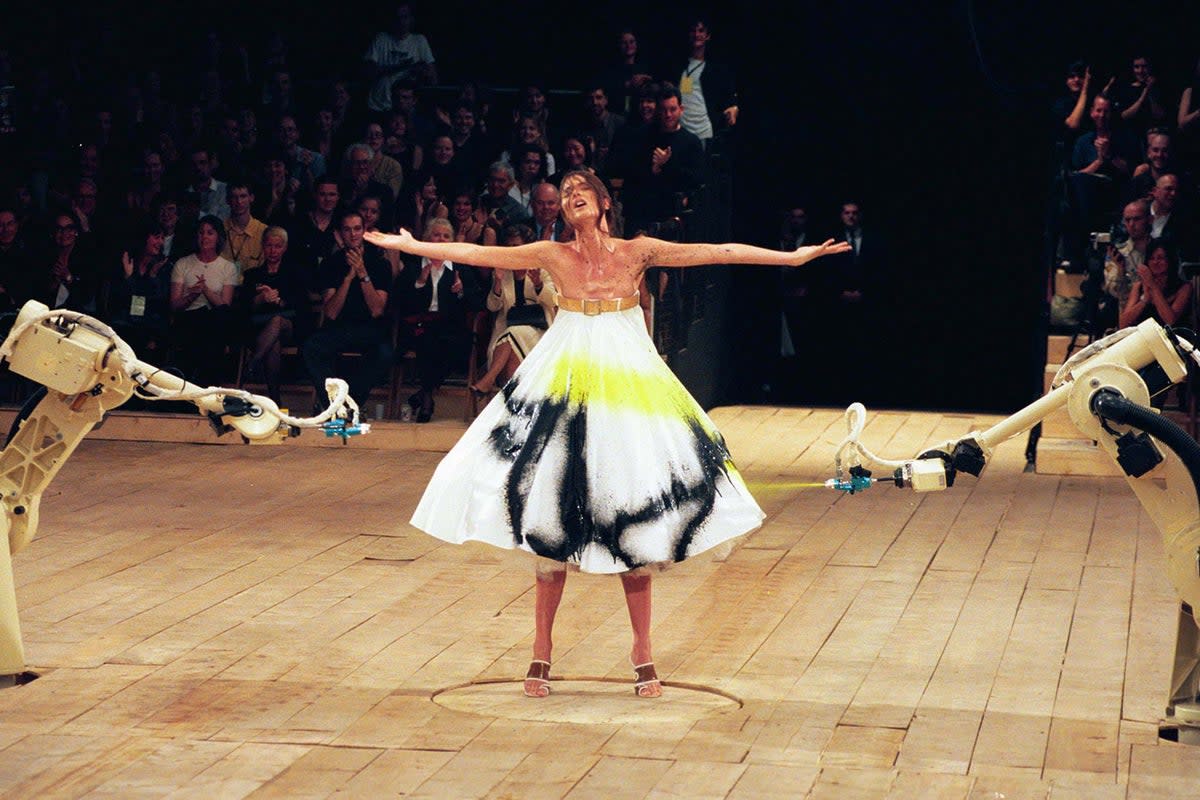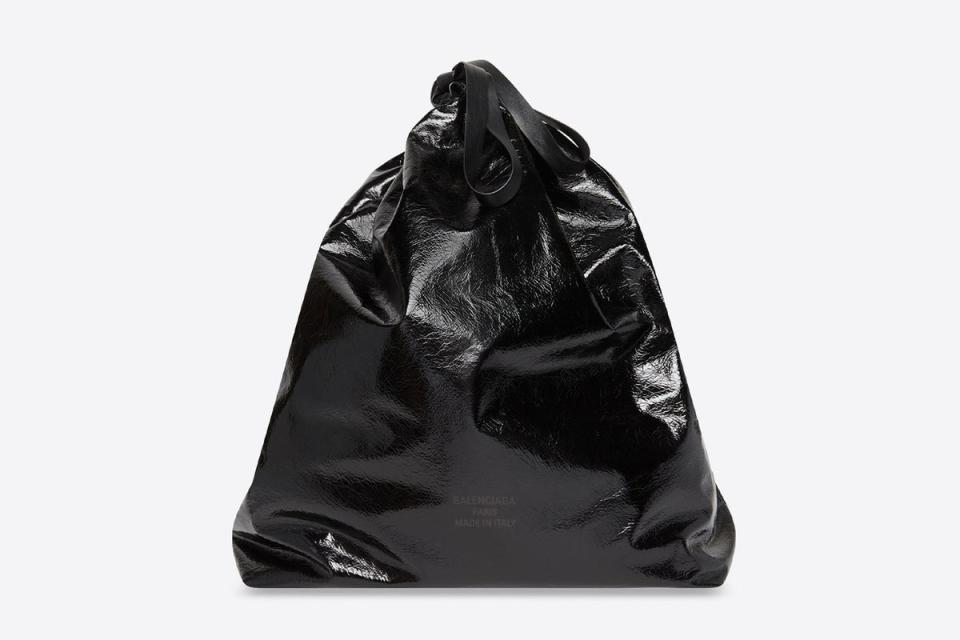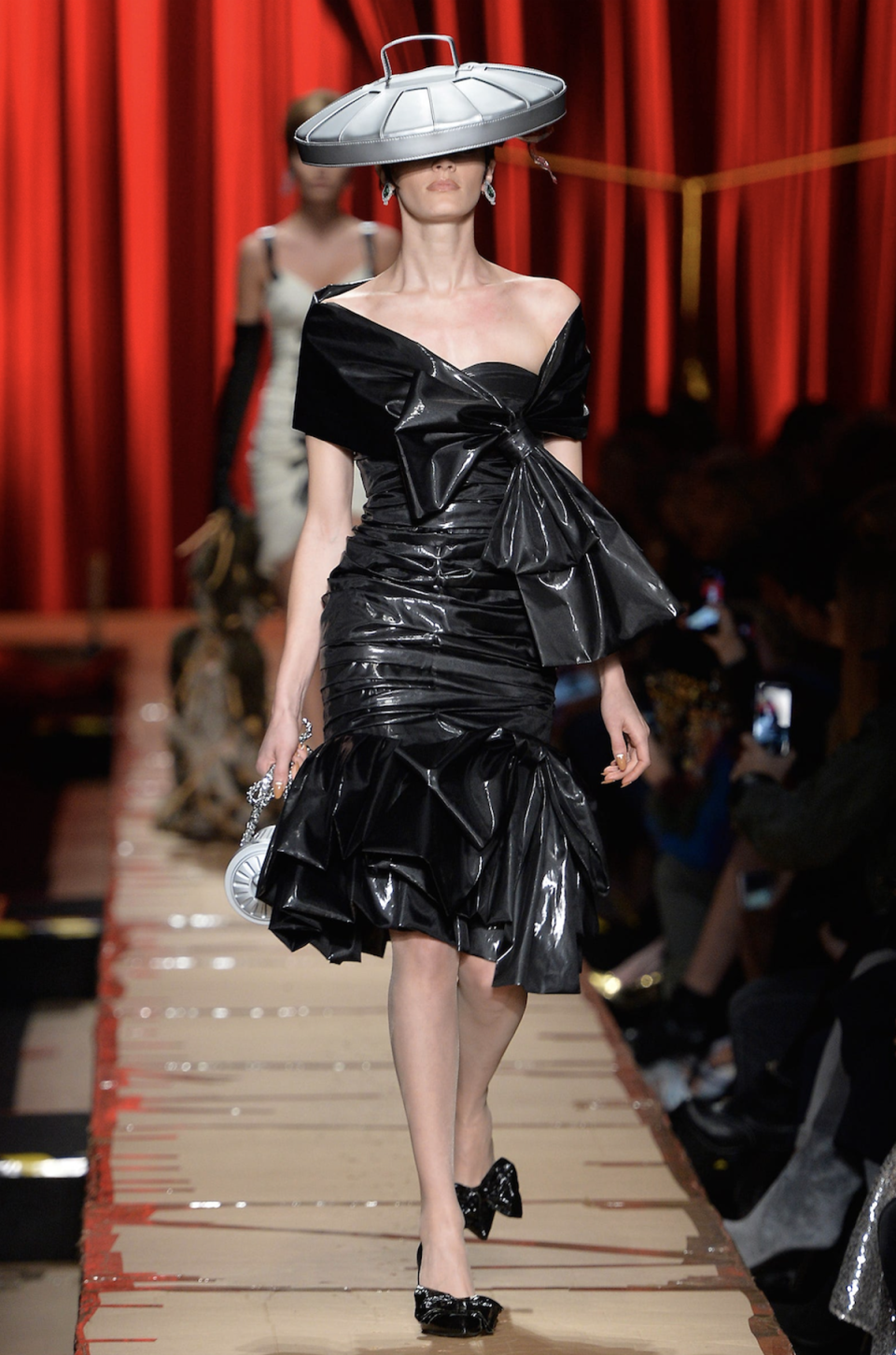High ‘trashion’! A brief history of fashion’s love affair with rubbish

Demna Gvasalia’s Balenciaga has never shied away from controversy. This week the internet is buzzing with criticism over the self-proclaimed “world’s most expensive trash bag”, which first showed up on Balenciaga’s AW22 catwalk show back in March which Gvasalia dedicated to Ukraine’s refugees.
The bag itself is a calfskin leather version of the typical black bin bag and has now gone on sale for $1,790 (around £1,500).

In May, the fashion house met with similar controversy when it released its ‘destroyed trainers’ – beaten up, muddied and falling apart – which were sold for $1,850 (around £1,500) a pair. While Gvasalia has moved on from items that should be in the bin and instead turned to the bin liner itself for inspiration, he is far from the first designer to base couture around what you might find in a tip.
I’m not talking about up-cycling here. In London especially, there is a wonderful array of talented young designers pushing for sustainability within fashion: Helen Kirkum, Ahluwalia, Bethany Williams, Paolina Russo and Tolu Coker to name but a few. But this article isn’t about them, nor is it really about sustainable materials and practices. I’m talking rot. Rubbish, trash, actual waste. Clothes that have been deliberately ruined. Garments that were once beautiful, that were deliberately warped into something with a more poignant meaning or purpose.
With the help of the grunge aesthetic, the Nineties had a particular fascination for destroyed clothing. Towards the beginning of the decade, one designer put himself at the forefront of both our minds and our nostrils. Mould is generally avoided by most (unless on a hunk of stilton), but for Cypriot fashion designer Hussein Chalayan, it was the aim of the game.
Models never quite know what they’re going to get at the Central Saint Martins graduate show. When Chalayan showed his collection in 1993, I can’t imagine they were overjoyed to discover that they would be stomping the runway wearing rotten, oxidised rags. Months prior, Chalayan buried his entire collection in a friend’s garden, only to unearth it days before the final show. Titled ‘The Tangent Flows’, his ambition was to highlight the beauty in decay. To this day he remains one of London Fashion Week’s most legendary, innovative designers.
During the same year, Lee Alexander McQueen also showed his debut fashion collection. Long before Balenciaga’s ‘trash pouch’, McQueen was hauling his belongings around in bin bags out of necessity. ‘Taxi Driver’ AW93 was his first collection post-graduation and was shown at the Ritz. After the show, McQueen and his friend Simon Ungless quickly piled the entire collection into bin bags before heading to a party to celebrate editor Michael Roberts. Rather than pay the cloakroom fee, McQueen and Ungless decided to store the bin bags behind some dustbins round the side of the building. By the time they left the party, the bags had been taken away. None of that collection remains today.
McQueen in particular had a penchant for destroying his own creations. Taking something perfect and tearing it up, making it as ugly as can be – in beautiful, mesmerising ways. One of the most famous examples of this is his notorious ‘spray paint dress’, part of his Spring 1999 collection titled ‘No. 13’. The only moment to ever make McQueen cry at one of his own shows was when model and dancer Shalom Harlow twirled between two mechanical arms that sprayed her white dress with thick smudges of black and yellow paint. He allowed robots to graffiti his collection and it became one of the most memorable moments in fashion-show history.

Prior to this in 1998, Issey Miyake had a similar idea. Imagine a white, sleeveless, column dress. Now imagine burying it under explosives and lighting a match. That’s exactly what the Japanese designer did in 1998 when he collaborated with Chinese artist Cai Guo-Qiang, who used gunpowder to burn images of dragons into the Pleats Please collection. It’s a spectacle that’s worth the watch if you haven’t seen it before (skip to 6m 20). These pieces, scorched with dark, explosive splatters, are now worth around £3,000 each.
Burning also became a feature of Jeremy Scott’s Moschino AW16 collection – inspired, of course, by cigarettes. Models including Anna Cleveland walked the runway while their dresses were alight, smoke billowing from their skirts as the edges curled and burned. Arguably, a lot of Scott’s Moschino collections include items that could also be found in the bin, but for his AW17 collection he quite literally sent a model dressed as an American trash can down the runway. Her black latex dress was made to look like the bin liner, while her hat was (literally) a large silver bin lid.

Personally, my own favourite ‘trashion’ story belongs to John Galliano, who in 1985 showed his legendary Fallen Angels collection. Moments before the models were due to walk the runway, Galliano made a snap decision that the shoes were too clean. He demanded they all go outside and drag their shoes through the mud. Patrick Cox, who had put blood, sweat and tears into making the shoes, confronted Galliano about the decision: “Don’t worry, they are worth more money now because it’s designer mud, darling”, was Galliano’s response.
Whether it be clothes that belong in the bin or fashion inspired by rubbish, Balenciaga is not the first and won’t be the last to take from the trash. But, whether charging so much for an item inspired by and dedicated to people displaced by war is in good taste is up for debate.


